Thermodynamics


4B - Heat and the First Law








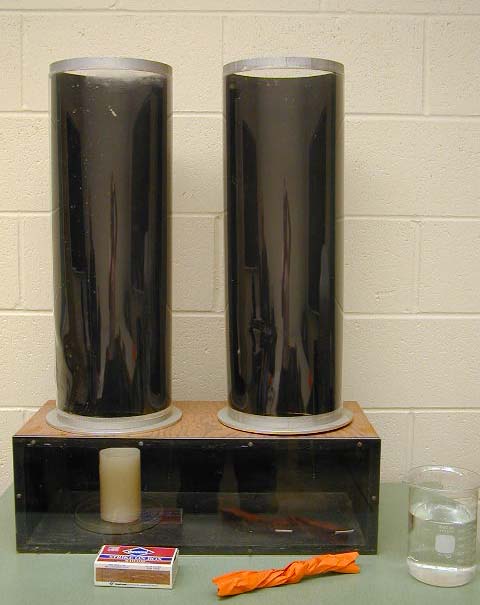 |
4B 20.20 - Thermal Convection in Gasses:
Demonstrates: Convection due to heat. Description: A convection chamber with two chimneys with a lighted candle under one. Smoke introduced into one side is pulled down and expelled through other. |
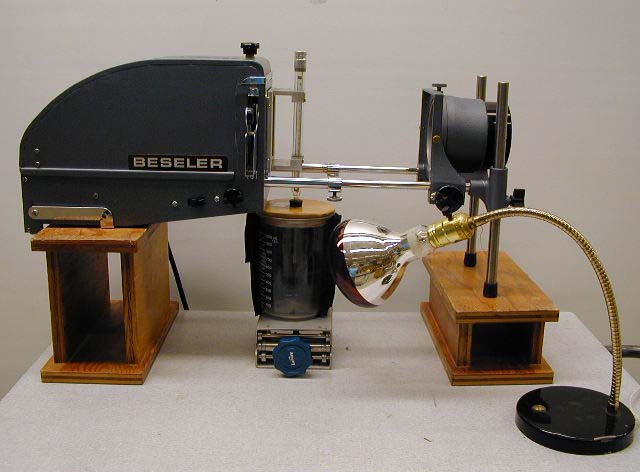 |
4B 20.40 - Greenhouse Effect:
Demonstrates: Glass transmits visible and near IR wavelengths but is opaque to longer wavelengths. Description: An infrared lamp is placed near a thermometer and temperature is marked. Thermometer is then placed in a covered glass beaker and higher temperature is noted |
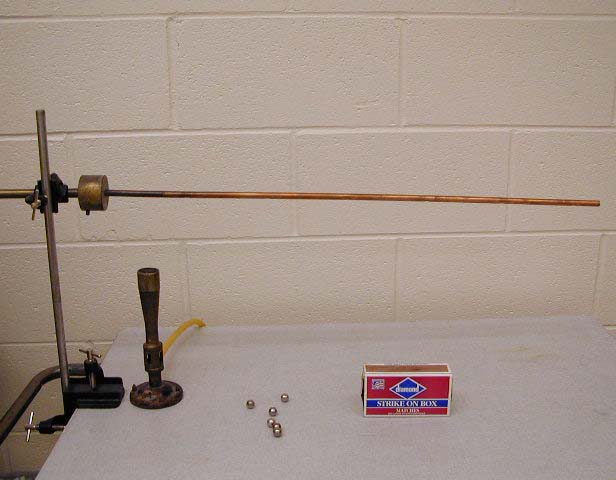 |
4B 30.10 - Thermal Conductivity:
Demonstrates: Heat conduction. Description: A copper rod that has steel ball bearings attached to it with wax. |
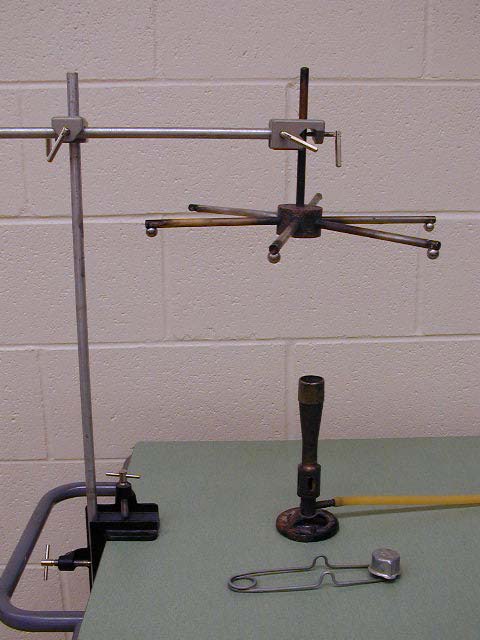 |
4B 30.20 - Thermal Conductivity of Metals:
Demonstrates: How different metals conduct heat at different rates. Description: Six rods of different metals radiate from a central hub. Each rod has a steel ball at the end of it. When the center hub is heated the balls drop off at varying rates depending on the thermal conductivity of each metal. |
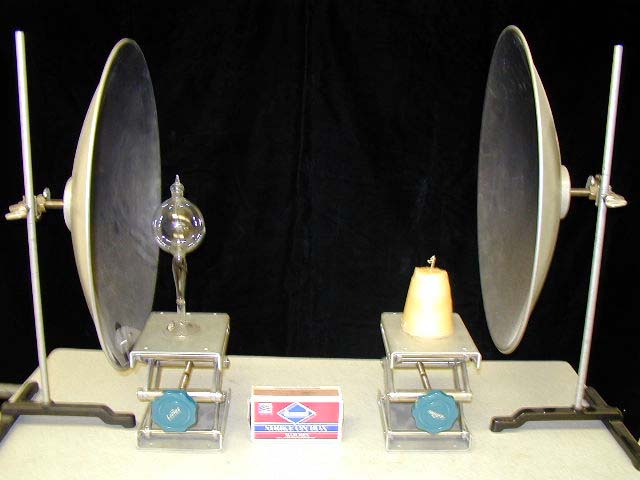 |
4B 40.20 - Thermal Radiation:
Demonstrates: Radiant energy of heat. Description: The radiant energy of a candle is focused into a beam and is detected by a radiometer. |
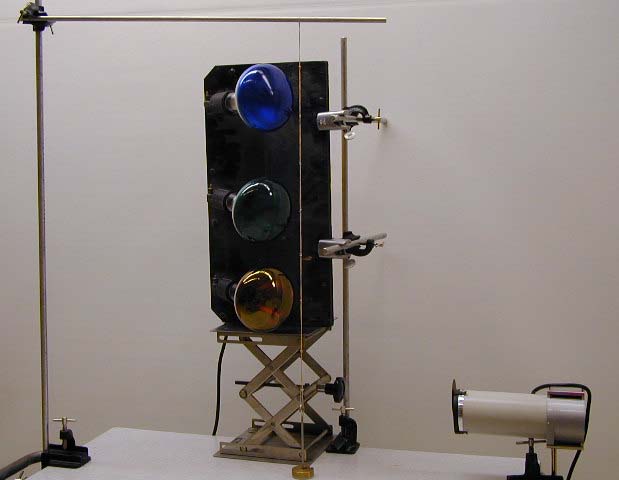 |
4B 50.10 - Incredible Shrinking Rubber Bands:
Demonstrates: Heat from the lamps will make the rubber bands shrink. Description: Weighted rubber bands are placed in front of lamps, bands shrink instead of stretch. |
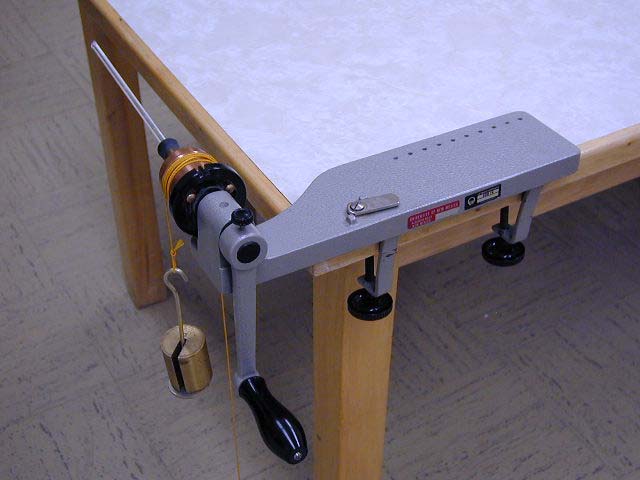 |
4B 60.20 - Mechanical Equivalent of Heat:
Demonstrates: How heat and friction are related to work. Description: Temperature changes caused by friction are measured and work is calculated. |
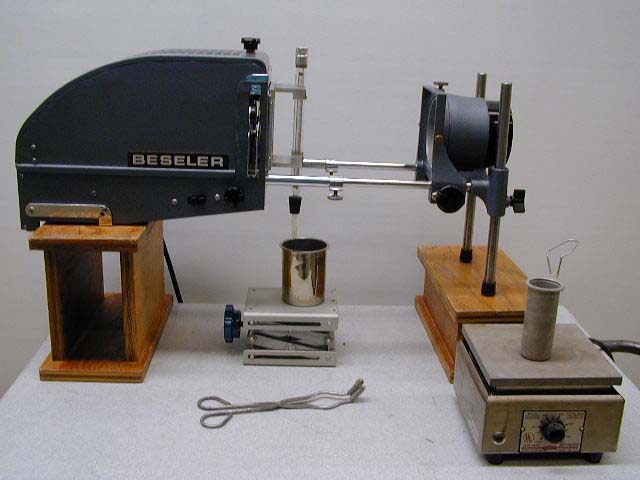 |
4B 60.30 - Calorimetry:
Demonstrates: Temperature change due to heat. Description: Hot lead shot is placed in a beaker of water to raise the temperature of system. |